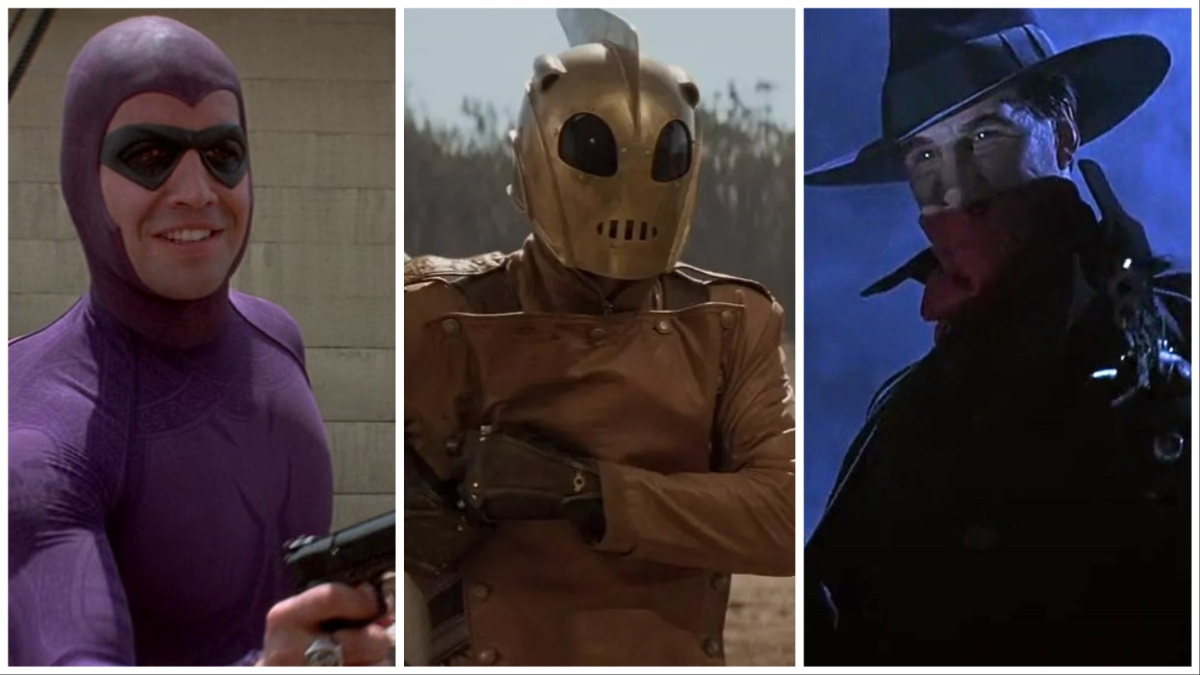In ’98 though, producer Spielberg and director Martin Campbell threaded a needle many other filmmakers doing period piece superhero movies could not. As Zorro was the original do-gooder who wore a mask and had a secret identity, many of those beats are still in The Mask of Zorro, but it felt fresh when the story became essentially a tale of legacy with one Zorro (Anthony Hopkins) passing the mantle on to another who seemed unready (Banderas). The film had the classy swashbuckling verve of a 1930s Errol Flynn movie, but the style and panache of a modern action movie working from an actually finished script. It’s old-fashioned and modern all at once, particularly whenever Banderas crossed blades with Catherine Zeta-Jones, who became a star overnight as the younger Zorro’s romantic foil/sparring partner.
The Mask of Zorro was a hit in 1998, grossing $250 million off a $95 million budget. It’s therefore curious that the film has not enjoyed the lasting cultural footprint of other popular ‘90s blockbusters, including one more below on this list. Because unlike most PG-13 summer tent poles of the late ‘90s, The Mask of Zorro has aged quite nicely. It relies on practical stunt work and vigorous fight choreography, something that pops against the CG-obsession of its contemporaries, which were thrilled to include now fairly unconvincing giant CG lizards, asteroids, or even mechanical spiders. It also features a rock solid screenplay by Ted Elliott and Terry Rossio (Aladdin, the first Pirates of the Caribbean), strong performances, witty dialogue, and another pitch perfect James Horner score. It’s a shame it seems to have faded in the collective memory.
The Mummy (1999)
We end with a film very much derived from early 20th century pulps, although it was drawing on a different muse than many of the Batman-chasing projects listed above. Instead writer-director Stephen Sommers unapologetically drew from Steven Spielberg and George Lucas’ beloved dance with 1930s adventure serials, Indiana Jones. Sommers apparently even pitched his version of The Mummy remake to Universal Pictures as “kind of Indiana Jones or Jason and the Argonauts with the mummy as the creature giving the hero a hard time.”
Still, a different type of pulp story was being extracted by Sommers, and it wasn’t drawn strictly from Dr. Jones. Consider The Mummy’s 1920s setting. Like a certain number of pulp superhero failures earlier in the ‘90s, The Mummy is a period piece, this time with events starting in 1923. That’s one year removed from the discovery of the Tomb of King Tutankhamen (King Tut). The first and only pharaoh discovered with his afterlife treasures intact, Tut captured the global imagination after WWI and led to a renewed and voracious American brand of Egyptomania. The release of Universal’s original The Mummy a decade later in 1932 was the crest of this wave, but many a pulp story, magazine, and comic had already featured undead mummies and curses out to get the hero.
The Mummy (1999) taps into that with a pulpy hero a lot like Indiana Jones and all the other descendants of H. Rider Haggard’s Alan Quartermaine. Yet to Sommers and The Mummy’s credit, those influences didn’t feel creaky or out-of-touch—a phenomenon that bedeviled all the other Indy knockoffs in the ‘80s, including Richard Chamberlain’s take on Quartermaine. Rather Brendan Fraser’s shrewd casting as Rick O’Connell gave a hip, faintly modern himbo energy to The Mummy. And when paired with Rachel Weisz’s charisma as his erudite and scholarly soulmate, The Mummy became an unlikely romantic adventure romp.
The movie really does wear a lot of hats: action, romance, even a few stabs at horror in lieu of its 1932 monster movie source material. Not all of them work, and the emphasis on showing off computer-generated scarabs and mummy armies has aged a lot worse than the sequences which just feature Fraser and Weisz on camel-back. But the movie not only was a success in ’99, grossing $417 million off an $80 million budget, but it has stood the test of time as an undying classic.









